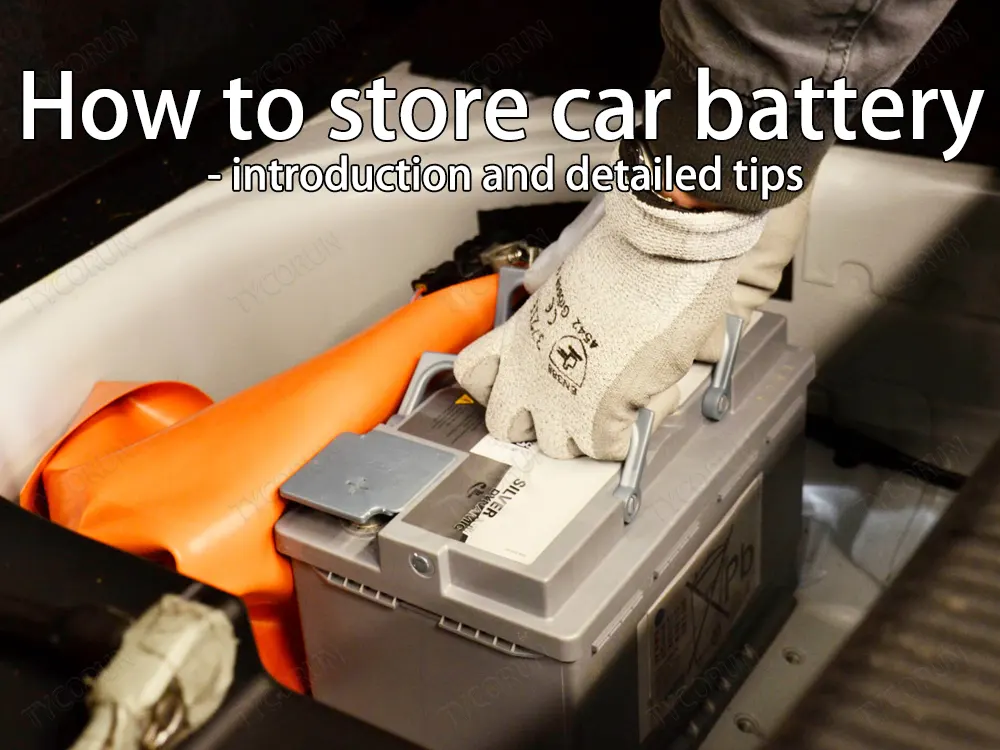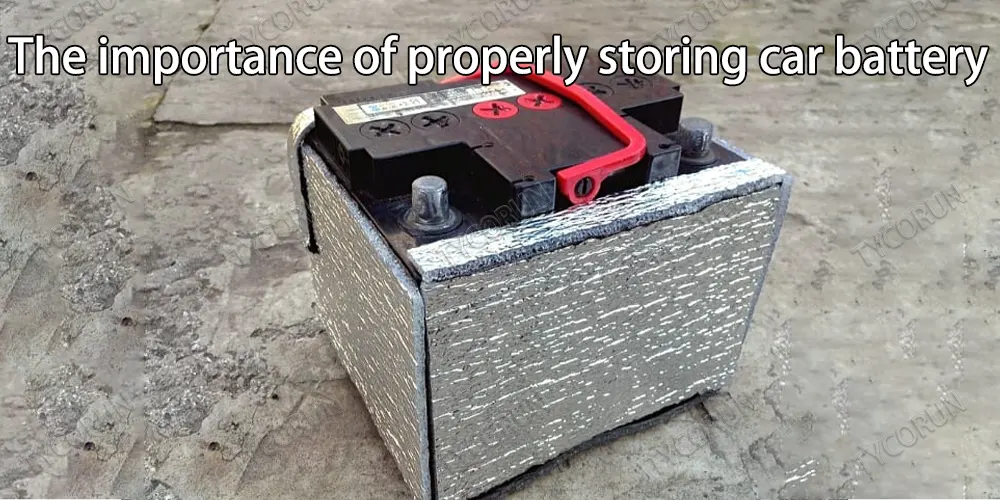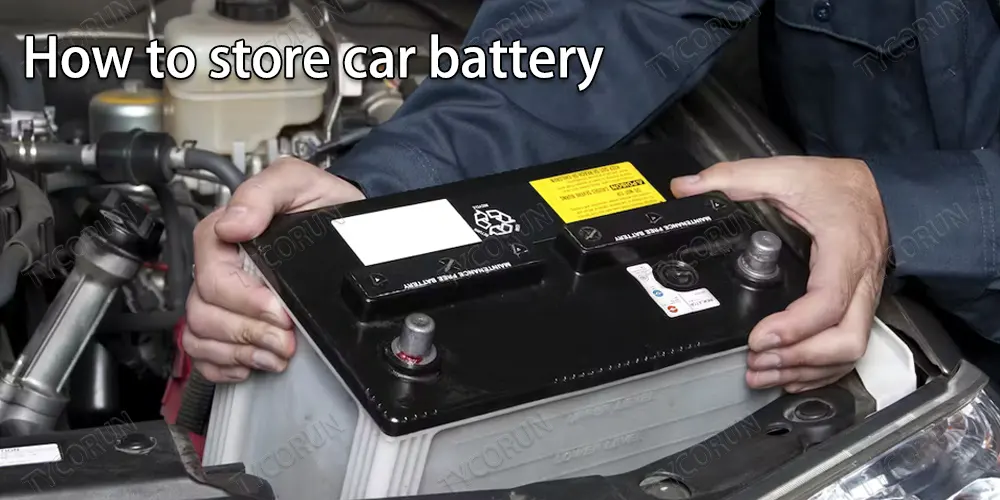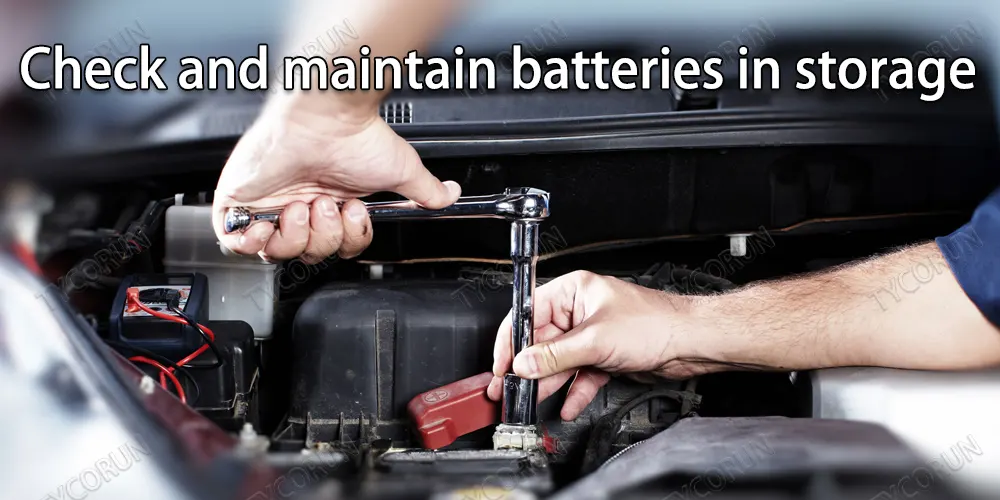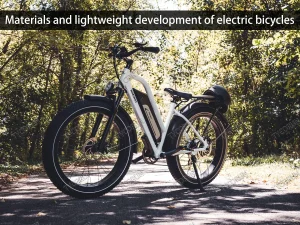Home » battery industry » How to store car battery – introduction and detailed tips
How to store car battery - introduction and detailed tips

The importance of properly storing car battery
In order to keep the battery in good condition and achieve the longest service life, custom lithium battery manufacturers usually sell according to the first-in-first-out principle, and car owners will also remove the battery from the car for storage if it is not used for a long time.
However, if the battery is left for a long time, it is still prone to irreversible vulcanization, and lead sulfate crystals are formed on the surface of the internal plate, which is difficult to charge and convert back to lead. Proper storage can keep batteries in good working condition from season to season.
Reasonable battery storage time
A car battery cannot be stored indefinitely as it will eventually discharge. Even a new battery will discharge, albeit at a slower rate than a battery that’s been a year or two old.
About how to store car battery that is brand new never used, it will last for 2 years and its capacity will decrease over time. During this time, sulfates will form on the plates, reducing the battery capacity by a small amount even if the battery is charged regularly. Most battery manufacturers recommend storing the battery for at most 6-9 months before use, so that the service life of the battery can be maintained at about 3 years.
About how to store car battery that is used, if the aging battery is well maintained and recharged with battery charger frequently, it can also be stored for about one year. But it needs to be recharged more frequently than a new battery, and the duration of each charge is relatively short.
Consequences of long-term car storage
Tire aging and deformation
Due to the long-term parking of the vehicle, the tire is subjected to stress from one direction for a long time, and a small amount of deformation will occur. The longer the vehicle is parked, the harder it is for the deformed parts to recover.
The main material of the tire is rubber, which contains a certain proportion of rubber filling oil, which acts like lubricating oil. If the tire is placed for a long time, the rubber filling oil will not only fail to effectively lubricate, but will even cause the tire to age faster.
Solution:
If the long-term parking is expected in advance, it is best to increase the tire pressure to keep the original shape of the tire as much as possible and reduce the contact area between the tire and the ground. Generally, 3.0-3.5 bar is more suitable for storage, and the tire pressure can be restored to normal after the next use.
Before driving the car for the first time after a long period of storage time, you must check the tire pressure. The easiest way is to check the tire pressure sensor. If there is no sensor, car owner can use foot to press the tire hard to judge whether it is out of air.
Performance reduction of automobile oil
If the engine oil and other oils are in a static state for a long time, as time goes by, problems such as volatilization, oxidation, deterioration and even gelation will easily occur, and the performance will drop significantly, which cannot meet the normal use of the car.
Solution:
When starting up next time, focus on checking the oil dipstick, and observe the color of the oil on the top to see if the oil has changed color and deteriorated. If it deteriorates, it needs to be replaced in time. If it’s the maintenance cycle, user can just go to the 4S shop for a full car inspection and maintenance, so that the car can be restored to its best condition in time.
Car paint aging and corrosion
In the process of long-term parking, the metal of the car body will be corroded by the moisture in the humid air, thus rusting. If the vehicle is parked outdoors, prolonged sun exposure, wind and rain will cause varying degrees of damage to the car paint and shorten the life of the car paint.
Solution:
If the car won’t be used in a long time, it should be cleaned in advance. At the same time, try to park the car in a relatively safe indoor parking lot. The indoor parking lot can not only protect the vehicle from wind, sun and rain, but also prevent foreign objects such as fallen leaves and branches from damaging the car paint.
Before parking, first observe the distribution of cameras in the parking lot, and park the car at a location where the cameras can capture it. Once there is a problem with the car, it will be well documented.
If there is no suitable indoor parking lot, try to find a cool, dry, well-ventilated and safe place to park, and cover the car with clothes, and avoid parking the car under trees and directly under buildings, so as not to damage the vehicle due to falling objects.
Battery depletion and lifespan reduction
If the car is only parked for four or five days without driving, there will be no problem, but if it lasts for a month or more, it will first cause the loss of the battery. If the car is parked for a long time, the anti-theft system and some equipment will generate a dormant current, which consumes about 0.5% to 0.8% of the electricity per day.
Although it seems to be a small power loss, it will consume the power of the battery after a long time. If it is in a state of power shortage for a long time, the life of the battery will be affected.
Regarding how to store car battery, the method is as below:
How to store car battery
Choose a suitable storage location
Sealed lead-acid batteries are one of the most common batteries in cars, and if stored in the right conditions, they can last for a long time, which is a great advantage. Of course, storage requires the battery to be removed from the vehicle.
Ideally, store sealed lead-acid batteries where they won’t be subject to bumps or accidental crossing of the terminals, so a shelf away from the aisle is a good idea. However, the most important thing for how to store ca battery for long term is temperature. Choose a place where the temperature is relatively constant at 10-15°C. For short-term storage, the temperature should not exceed 25°C, otherwise it will affect the life of the battery.
Fully charge the battery before storing
Whether it is a new battery or an old battery taken out of the car, storage after a full charge is very important for its life. In general, sealed lead-acid batteries lose about 3% of their charge per month, which may not seem like much, but months of storage can lead to a low charge.
A full charge is a crucial detail, as batteries are prone to sulfuration when they are discharged for too long. Lead sulfate builds up on the plates inside the battery and leads to hardening, permanently reducing the battery’s future chargeability. When the charge is below 60 – 70%, the probability of vulcanization is greatly increased, and if it is fully charged to begin with, this situation can be reduced.
Check and maintain batteries in storage
For car batteries, the so-called “long-term storage without maintenance” is not proper. As mentioned above, power energy is continuously generated naturally inside the battery, and a small amount of capacity is lost each month. As time passes, the battery’s ability to hold a charge will decrease. To prevent lead sulfate from forming and hardening on the plates, the solution on how to store car battery is not complicated:
- Check the battery regularly, and charge it when the power is reduced. Test the battery voltage in storage every three months, if it is lower than 12.4V, it should get fully charged with slow charging.
- If conditions permit, it is recommended to start the car every one or two weeks and run it at idle speed for 10-20 minutes or drive the car out for a walk. When driving the car, pay attention to let the water temperature and oil temperature reach the normal driving state, and step on the brakes a few more times to avoid rusting of the brake disc.
Clean the terminals
Remove the battery from the car and clean the battery casing or the sediment at both ends. This corrosion may be caused by the battery’s self-discharge through what is known as transient power loss. Clean the battery and terminals with a neutralizing solution, and then treat the terminals with a corrosion-resistant spray from the retail store.
Misunderstandings about how to store car battery
Not only has the way batteries are stored changed over the past few decades, but so has the technology used to manufacture them. So there are some misunderstandings about how to store car battery that are either outdated or just plain wrong.
Misunderstanding 1: Do not place the battery directly on the concrete floor.
Early battery casings used tar-coated wooden boxes or rubber casings and were stored on concrete floors, which could cause the batteries to absorb moisture. Over time, the battery will discharge. However, batteries today, and those of past decades, are manufactured with hard plastic casings, which negates this inference. There is nothing wrong with storing batteries on a concrete floor now.
Misunderstanding 2: New batteries can be stored as long as you want.
Even in a new battery that has never been installed, kinetic energy continues to be generated and lead sulfate forms on the lead plates inside the battery. So a new battery loses not only its charge, but its capacity before it’s sold. Batteries stored for long periods of time should go through battery test and get recharged regularly.
Misunderstanding 3: Frequent deep discharges are healthy.
For lithium-ion batteries, it is generally recommended to fully discharge the battery occasionally and then fully charge it, and storing the battery without a full charge is not a big deal. But for ordinary sealed lead-acid batteries, deep discharge is an unhealthy behavior for how to store car battery, and the car battery should always be kept fully charged.

